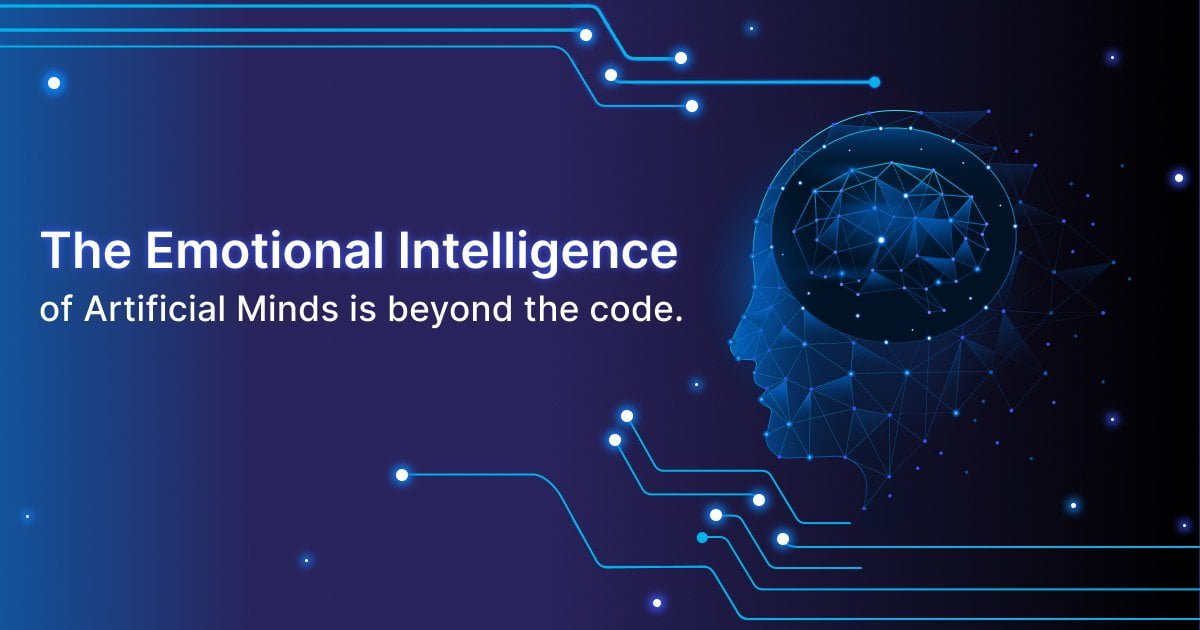
Artificial Intelligence was not enough for our generation. We needed more. And with that, new AI technologies have begun to learn more about human emotions. Emotion AI, or Emotional Intelligence (EI), is all set to captivate the World with its sensations around the globe. A subsection of AI capable of reacting to human emotions. The successful accomplishments of AI and its analyzing capabilities have enhanced the chances for machines to use their strengths to understand almost everything about humans and their emotions.
With some advanced machine learning techniques and algorithms, EI is believed to listen to voice inflection and recognize the stress and anger in it. They can also analyze human images to read micro-expressions on human faces to analyze their emotions. These artificial minds will now be able to respond with emotions and empathy.
There are multiple theories coming out in the market stating both the positive and negative aspects of having EI. Similar to AI and its impact, people are concerned about EI. However, there could be an entirely different perspective on having EI in our working culture. In this article, we have involved both perspectives related to EI.
The EI breakthrough may open a world of possibilities in different domains including customer services for corporates as well as healthcare. They can be used to provide guidance and solutions to the customers associated with the Katalyst Professional services-offering companies. At the same time, they can be employed in the healthcare sector for counseling and therapy-related jobs. The EI-enabled chatbots can help individuals with comforting support in difficult times.
The development of EI can further lead to open possibilities for humans to understand emotions in a deeper and more comprehensive way. Likewise, EI can also revolutionize the World of coding and development. There could be different aspects opened by EI in the field of development and coding.
Emotional Intelligence and the World of Code-
Coding can explore a range of prospects with EI, for instance, creating more responsive systems towards human needs and emotions. Coding, programming, and emotions altogether may seem unrelated, but together, they can play an important role in developing user-friendly interfaces.
As mentioned above, the algorithms generated for this must recognize the tone and facial expression of humans to provide mostly accurate and suitable responses to them. There are ample benefits associated with EI-based coding. It can lead to valuable user experience and boost the sense of connection between humans and machines. Additionally, the combination of emotions and technology can lead to more satisfactory results for the end users.
Artificial EI Can Change How People Engage With Robots.
With EI, it is possible that robots will be able to understand our emotions and tailor their interactions with us accordingly. This fresh approach will likely generate a wide range of questions, divisive emotions, and enthusiasm. If we can do it securely and progressively, we could alter customer and employee experiences in ways we never expected, or predicted, or envisioned.
Ethical Implications of Emotional AI
Nevertheless, beyond perks and profits, there lies a world where negative outcomes matter even more. With AI becoming advanced and popular in society, there are certain Considerations required based on the ethics of EI. While on the one hand, EI may work in improving our lives; on the other hand, it may also be a topic of concern and questions. For instance, Emotional AI can lead to an invasion of privacy, as they may collect personal information to understand human emotions without consent. If the data is left unprotected, that can be a question and concern.
While the technological obstacles are significant, so is the need to protect user safety and avoid emotional Intelligence from being utilized in inappropriate ways. The biggest danger is not the AI itself but the people who train artificial intelligence agents to take advantage of emotional tipping moments to affect human behavior. The safeguards we set in place now will be vital to ensure this technology’s safety and ethical application. The most apparent first step is that artificial Intelligence should never be used to persuade people that they are also human; users should always be aware that they are engaging with an AI agent to maintain a barrier.
To sum up-
Detecting emotions is clearly a difficult undertaking, whether due to the subjective character of emotions or inconsistencies across feelings. Certain technologies perform more effectively than others at detecting specific emotions; thus, combining them may assist in reducing bias. However, incorporating cultural variations in algorithms will need more than simply mixing and referring to diverse technologies. Having diverse teams develop emotional AI algorithms will be critical to avoiding prejudice and truly reflecting the variety of emotions. This includes not just gender and racial variety but also diversity in social level and viewpoints, which eliminates everything from xenophobia to homophobia to ageism.
Emotional AI, moreover, will be a strong weapon, driving businesses to reassess their connections with customers and staff alike. It will additionally provide new measures for understanding people, but it will also significantly change the way we think about things. However, as corporations go into the field of emotional Intelligence, the requirement to avoid biases from creeping in will become critical. Failure to intervene will result in certain groups being misunderstood more than ever.

